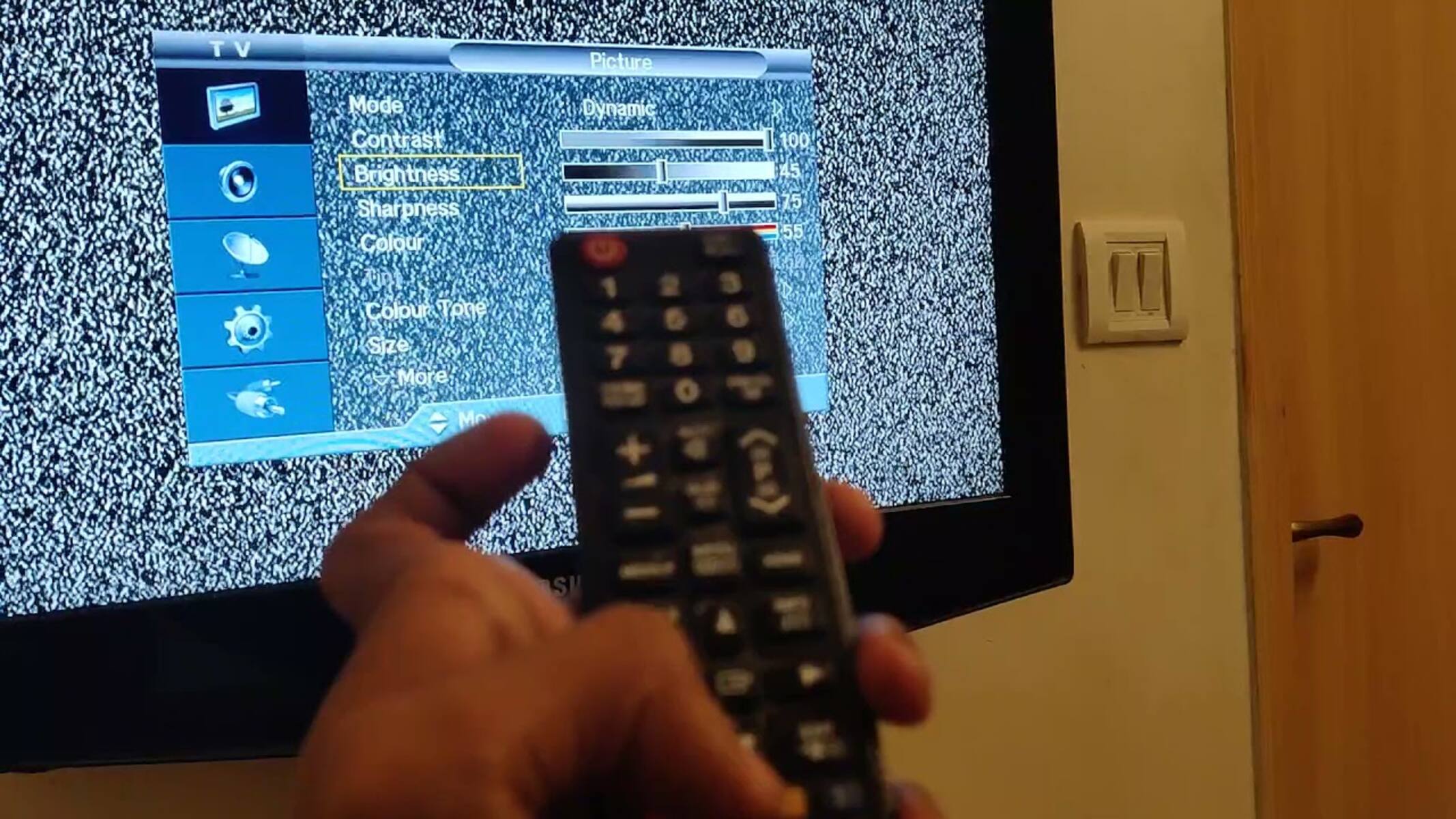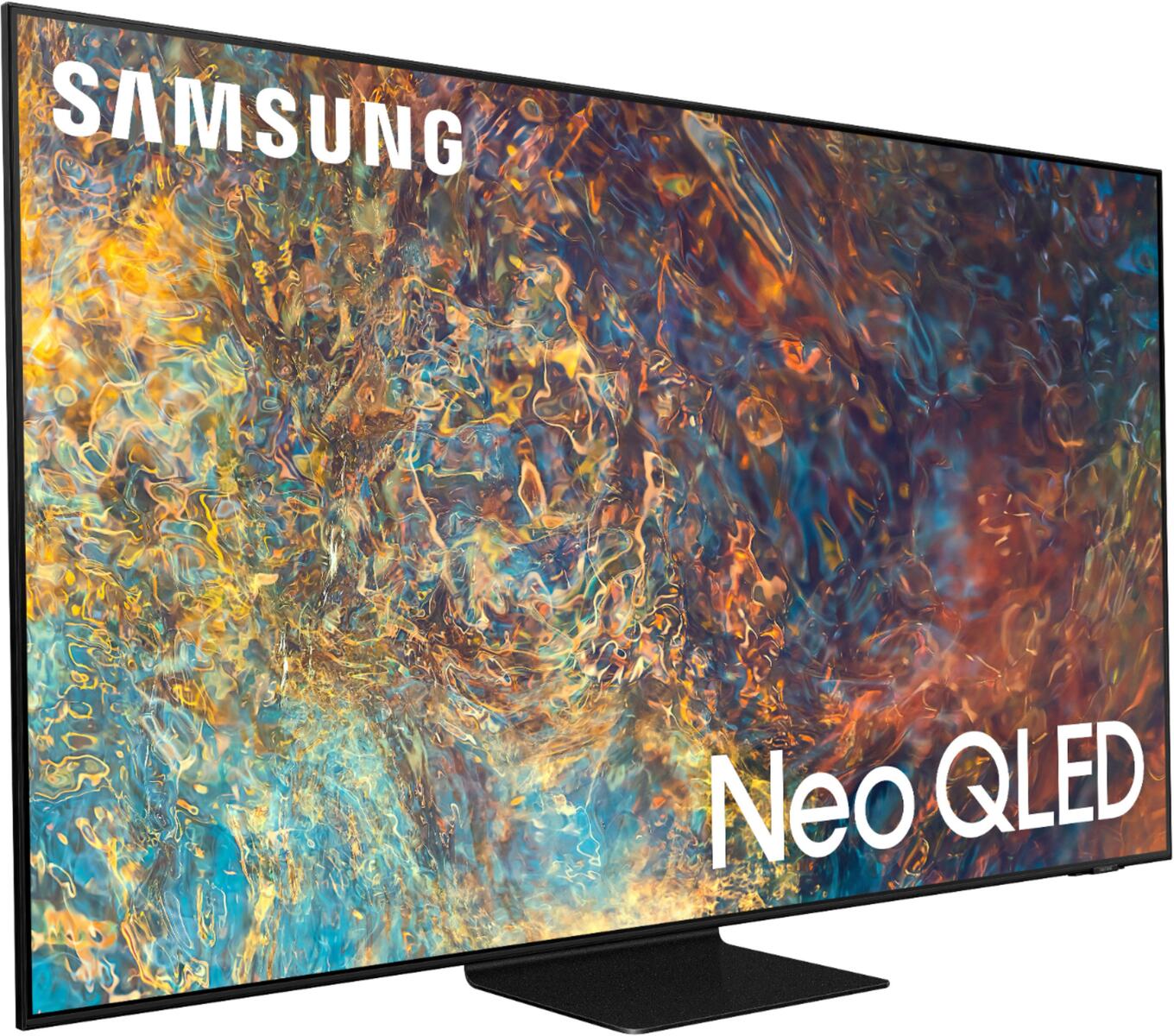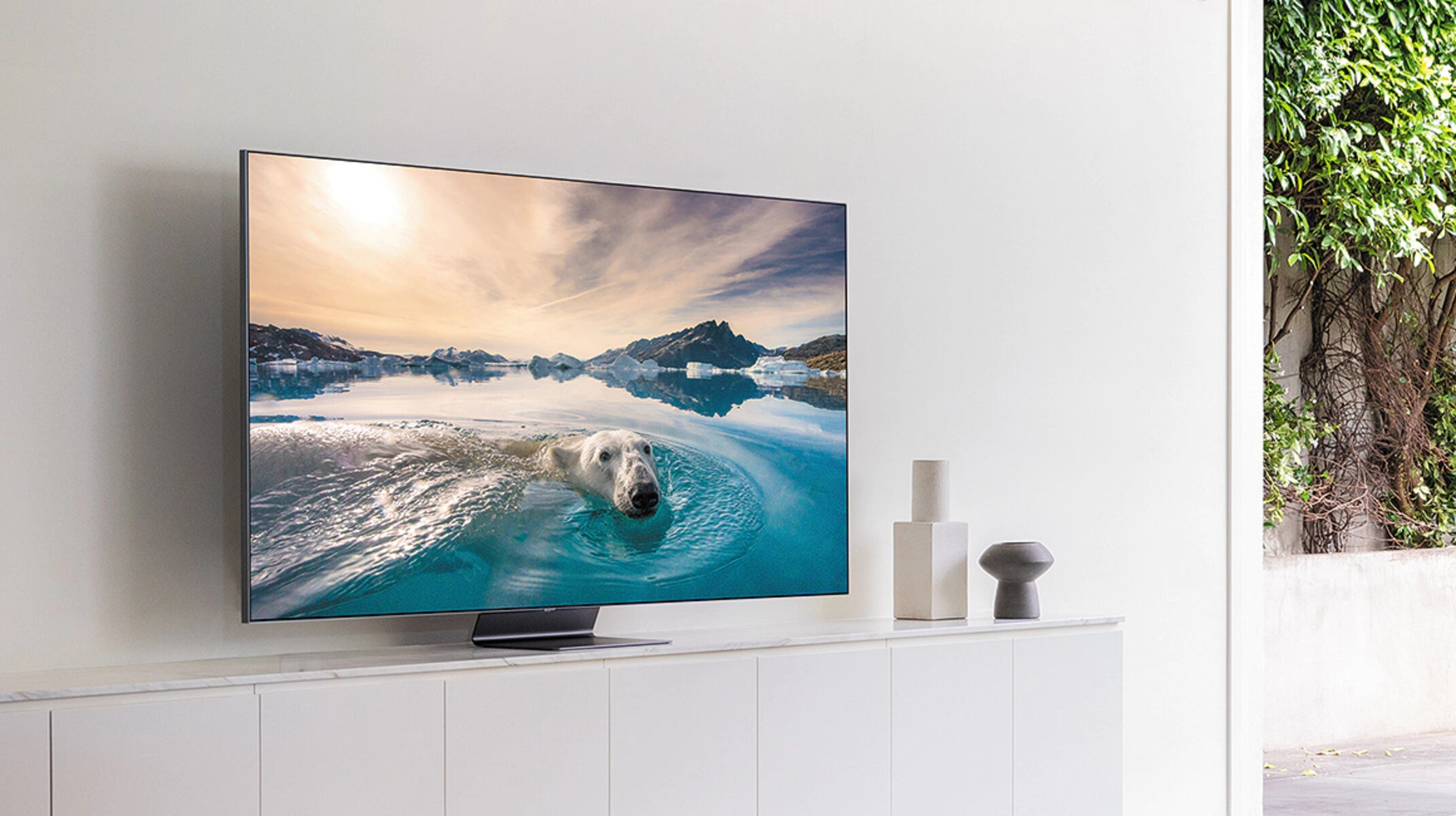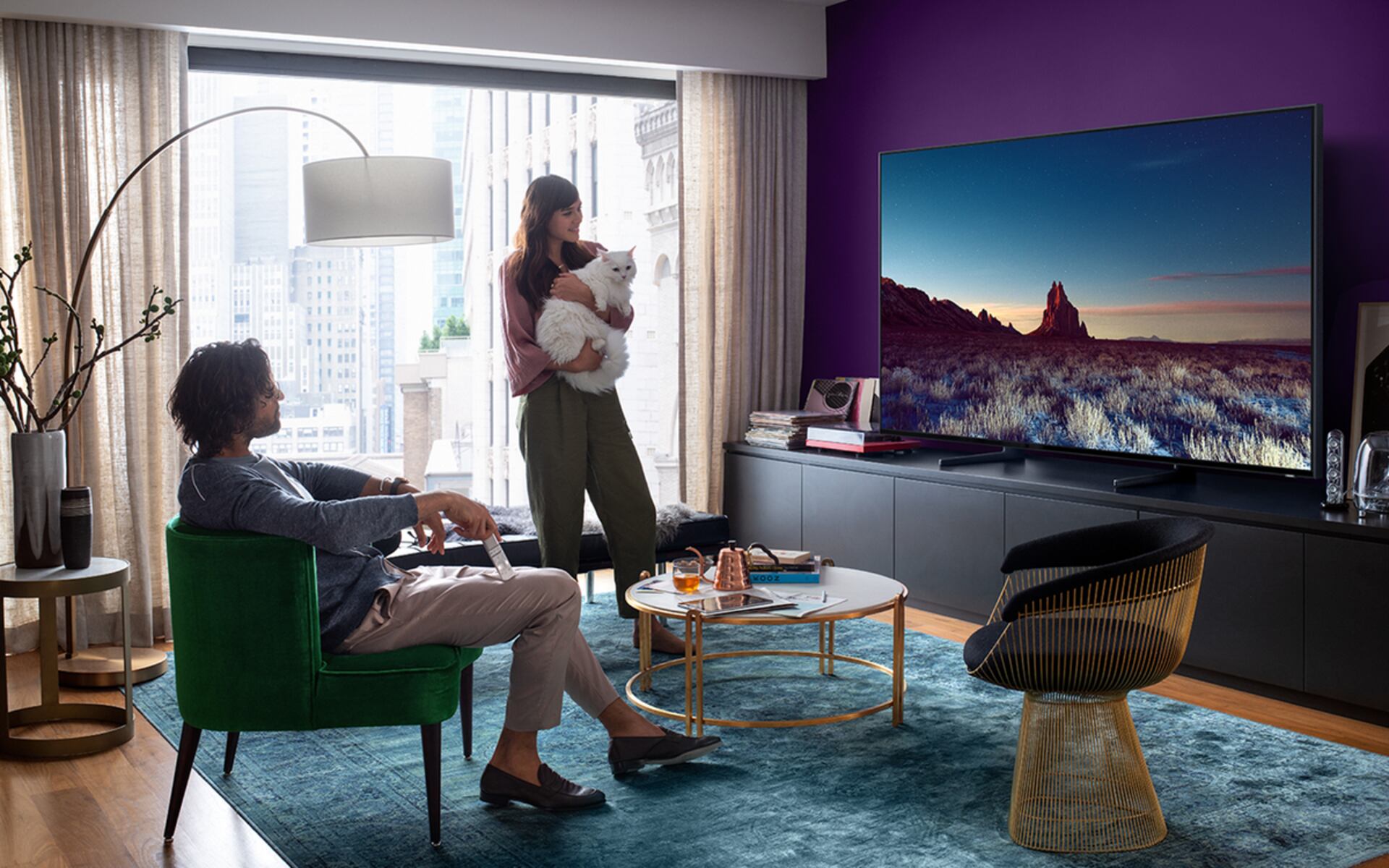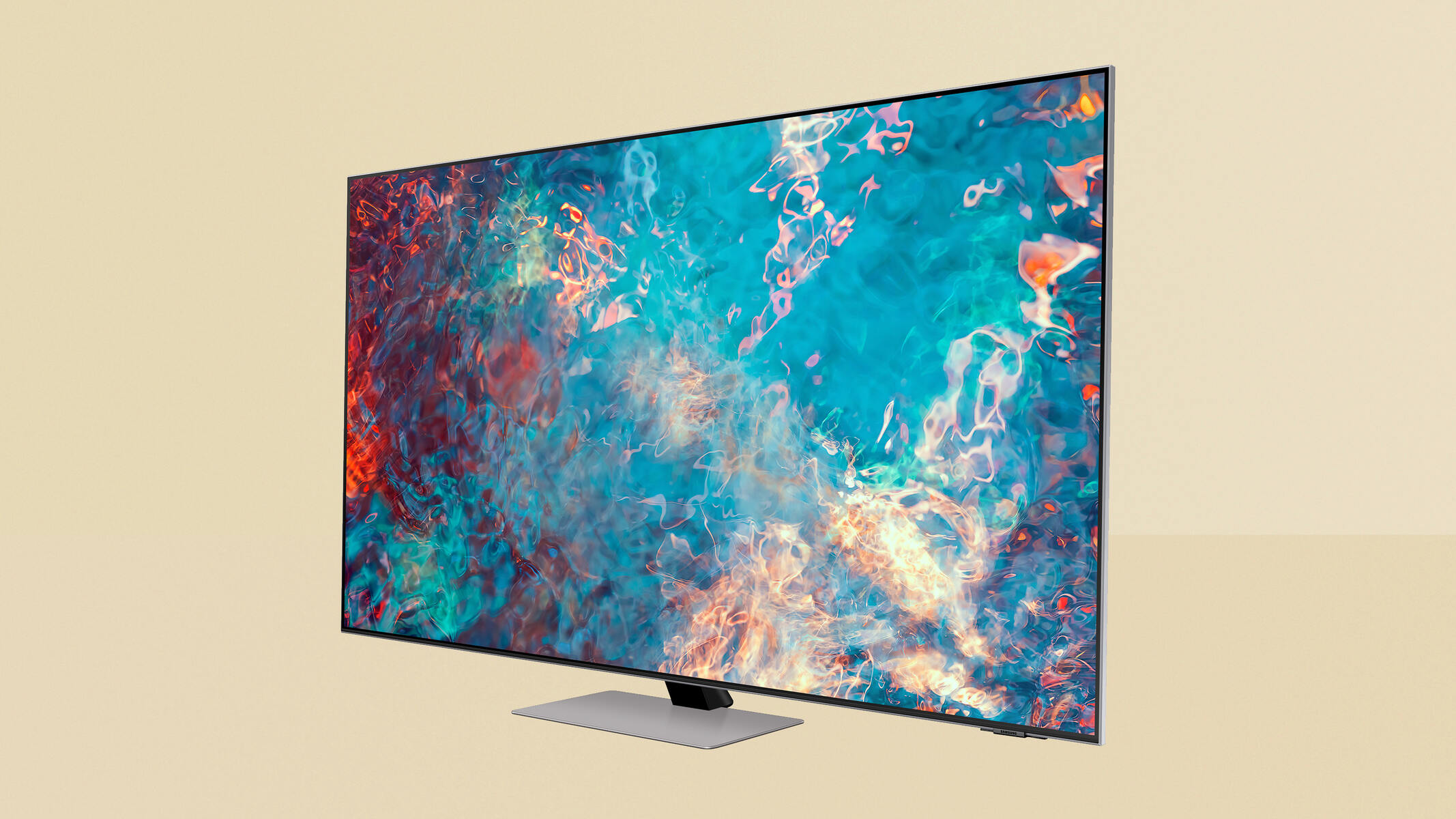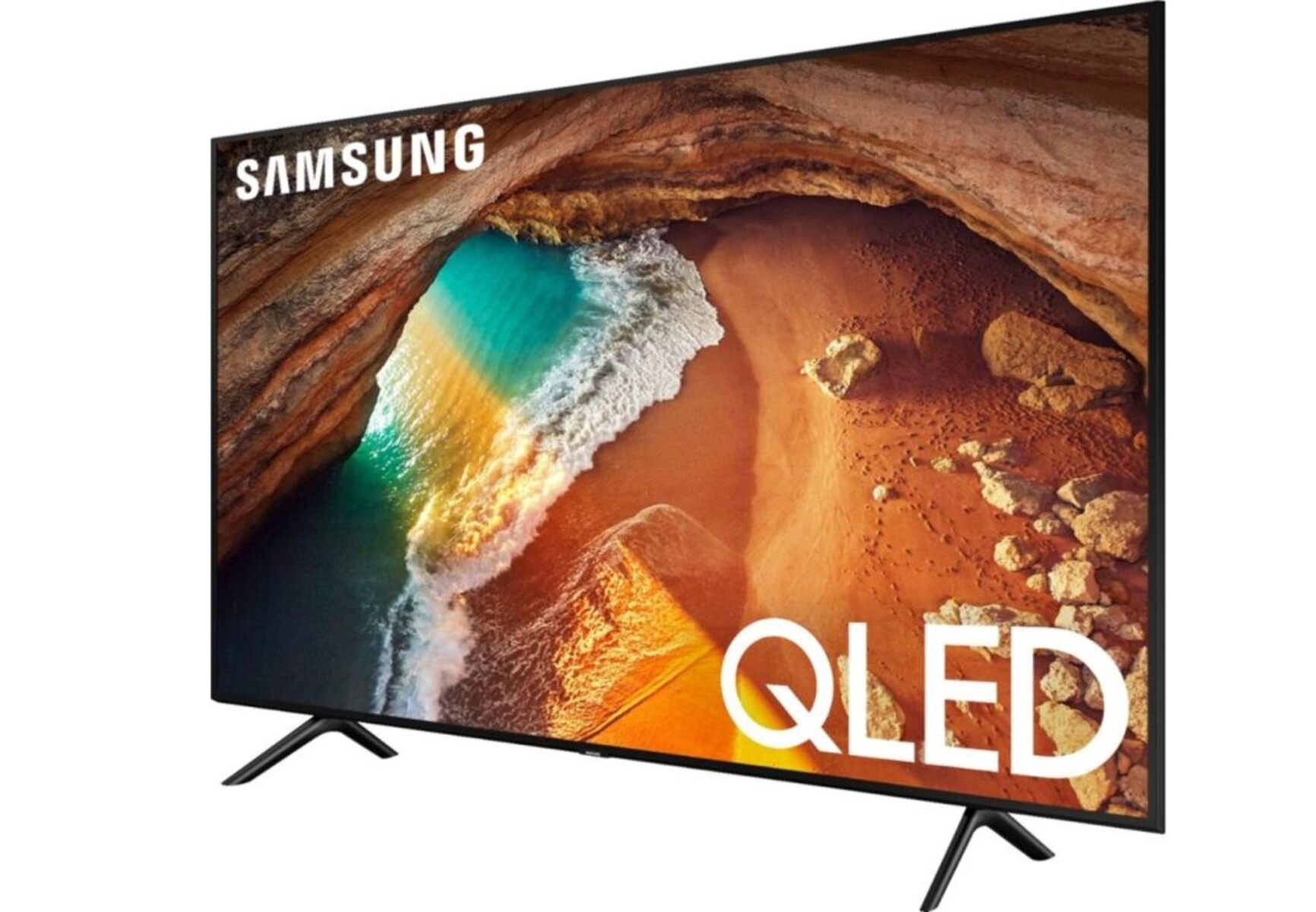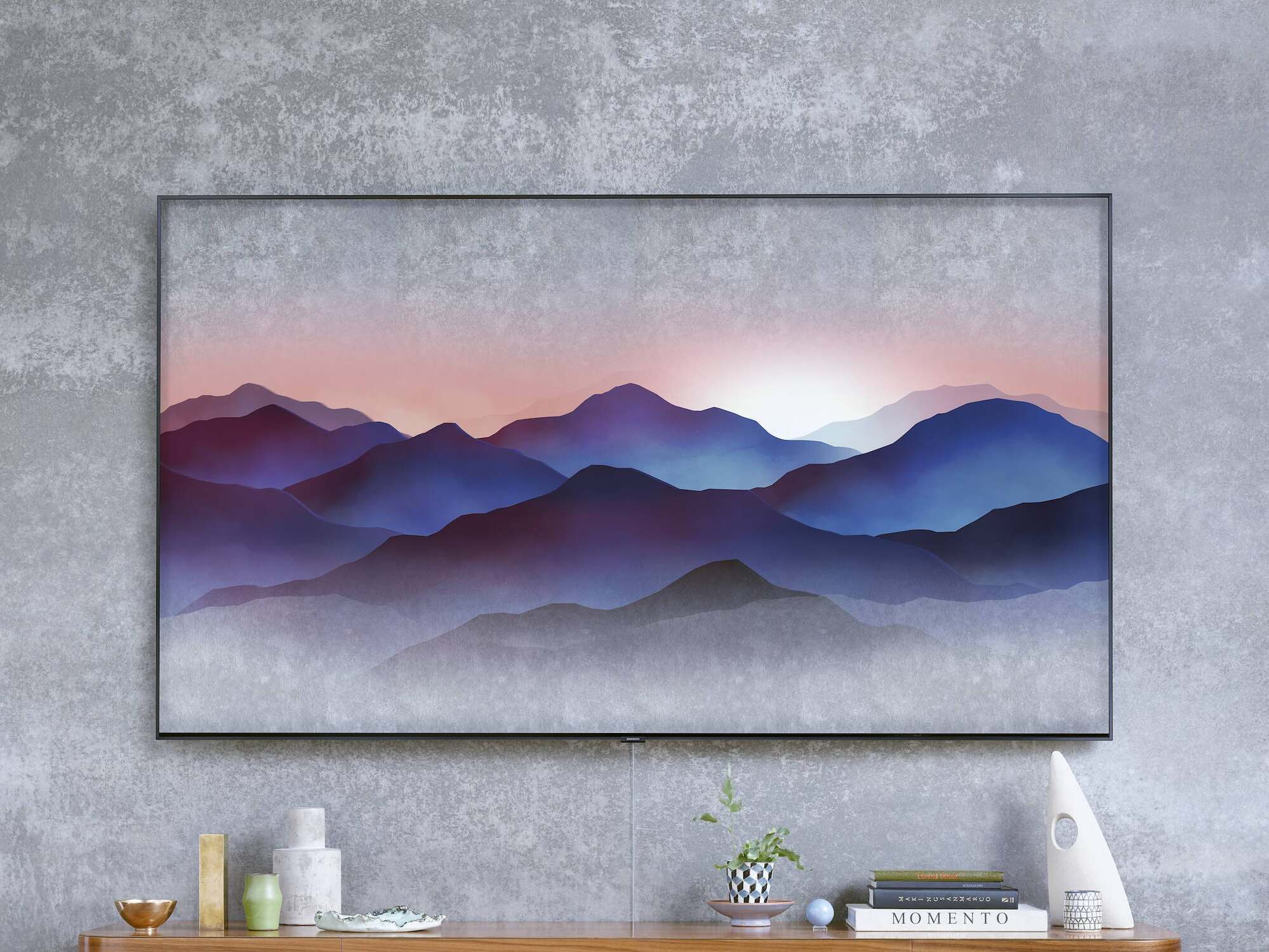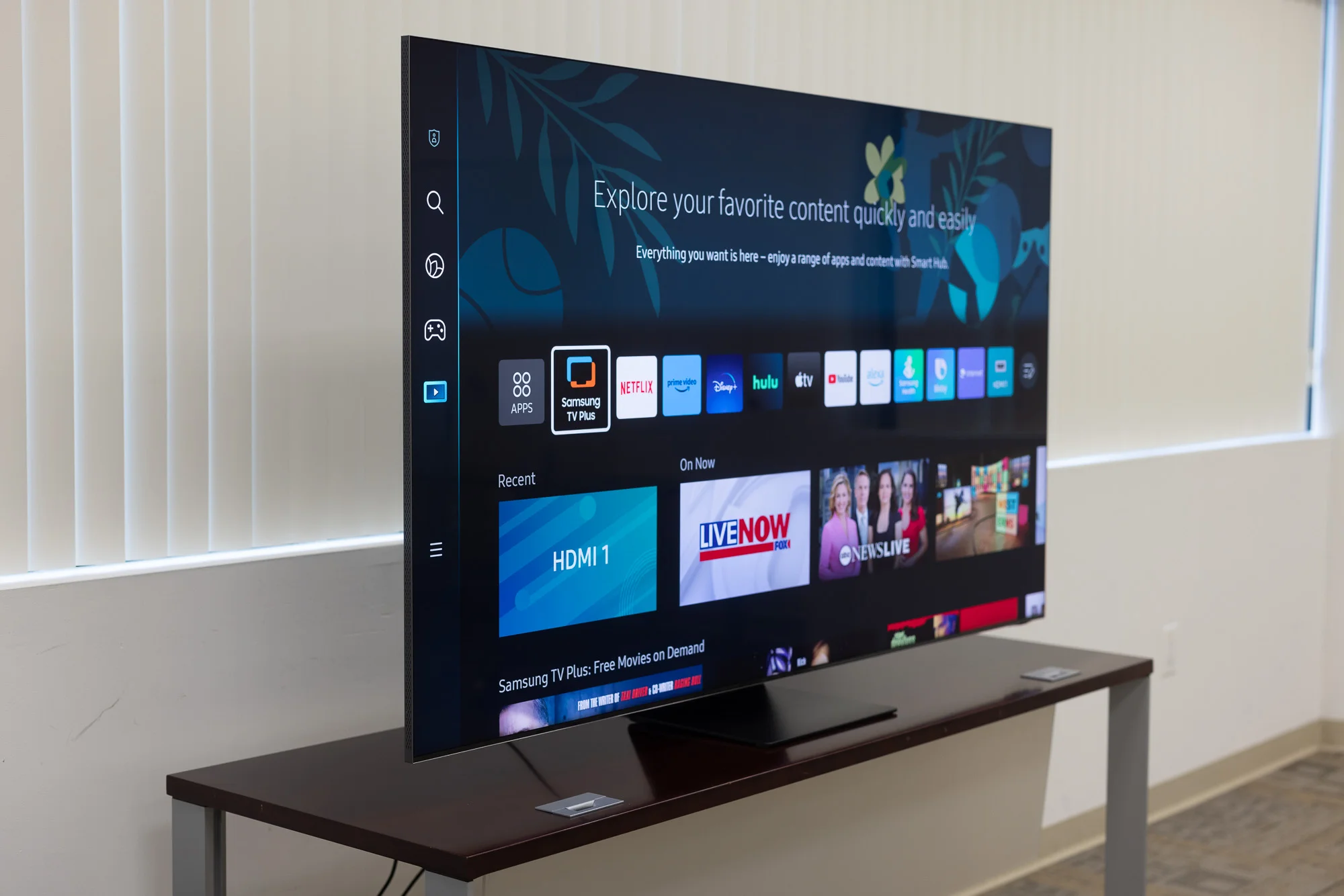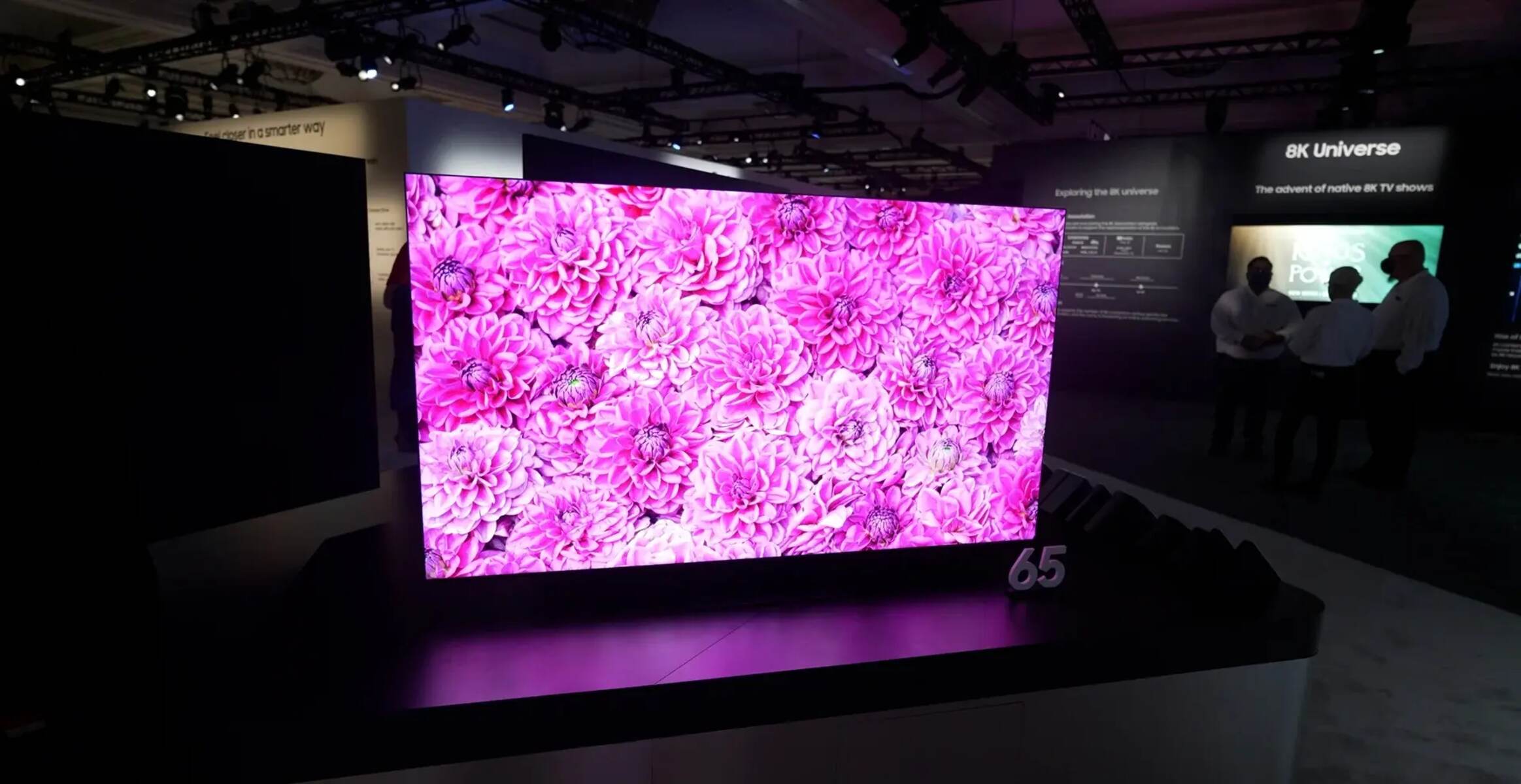Introduction
Adjusting the brightness on your Samsung QLED TV can greatly enhance your viewing experience. Whether you want to brighten the screen for watching movies or dim it for a cozy ambiance, knowing how to control the brightness settings is essential. The Samsung QLED TVs offer a range of options to adjust brightness and optimize the picture quality, allowing you to customize your viewing experience to your preference.
Having the right brightness level can not only improve the visual clarity but also reduce eye strain and ensure a comfortable viewing experience. In this guide, we will explore the various methods you can use to adjust the brightness on your Samsung QLED TV. From tweaking TV settings to utilizing advanced features and external devices, we’ll cover everything you need to know to get the perfect brightness for your TV.
Before we delve into the specifics of adjusting brightness settings, it’s important to understand the different picture modes available on your Samsung QLED TV. These modes serve different purposes and can affect the overall brightness of the screen. By familiarizing yourself with these modes, you can have a better understanding of how to optimize brightness for different scenarios.
So, if you’re ready to unlock the full potential of your Samsung QLED TV and achieve the perfect brightness settings for your viewing pleasure, let’s dive in and explore the different methods available to adjust brightness.
Understanding the Different Picture Modes
When it comes to adjusting the brightness on your Samsung QLED TV, understanding the different picture modes available can be extremely helpful. These modes are designed to optimize the picture quality based on the content you are viewing, and they can influence the overall brightness of the screen.
Let’s take a closer look at the most common picture modes found on Samsung QLED TVs:
- Standard Mode: This is the default picture mode on your Samsung QLED TV. It provides a balanced level of brightness and is suitable for everyday viewing. It is perfect for watching TV shows, browsing the internet, or playing video games.
- Vivid Mode: This mode is designed to enhance color saturation and brightness, resulting in a more vibrant and lively picture. It can be ideal for watching movies or sports events where you want the colors to pop.
- Movie Mode: If you prefer a more cinematic experience, the Movie mode is your best choice. It optimizes the picture settings to deliver more accurate colors and a slightly dimmer screen, creating a theater-like atmosphere.
- Game Mode: If you are an avid gamer, the Game mode is specifically tailored to provide low input lag and fast response times. While it may not necessarily affect the brightness, it is worth mentioning due to its relevance to gaming enthusiasts.
These are just a few of the picture modes available on Samsung QLED TVs. Depending on the model you own, you may have additional modes such as Sports mode, HDR mode, or Eco mode. Each mode is designed to enhance specific types of content and may have varying effects on the brightness levels.
Understanding the different picture modes is crucial when adjusting the brightness on your Samsung QLED TV. By selecting the appropriate mode for the content you are viewing, you can ensure the optimal brightness settings and enjoy a more immersive viewing experience.
Adjusting Brightness Using the TV Settings
One of the simplest and most common ways to adjust the brightness on your Samsung QLED TV is through the TV settings menu. Here’s how you can do it:
- Press the ‘Menu’ button on your TV remote to access the settings menu.
- Navigate to the ‘Picture’ settings category using the arrow keys.
- Within the ‘Picture’ settings, look for the option labeled ‘Brightness’ or ‘Backlight’. The terminology may vary slightly depending on the model of your TV.
- Use the arrow keys to increase or decrease the brightness level to your desired setting. As you make adjustments, the changes will be visible on the screen in real-time.
- Once you’re satisfied with the brightness level, press the ‘Exit’ or ‘Menu’ button to save your settings.
It’s important to keep in mind that adjusting the brightness directly through the TV settings may affect other picture settings, such as contrast or color temperature. While it can be a convenient way to make quick changes, it’s recommended to utilize other methods for more precise adjustments.
If you’re unsure about the optimal brightness level for your environment, you can experiment with different settings and gauge their impact on your viewing experience. Remember that the ideal brightness may vary depending on factors such as the ambient lighting in your room or personal preferences.
By using the TV settings menu to adjust the brightness on your Samsung QLED TV, you have a simple and straightforward method to customize the picture quality to your liking. However, there are additional features and options available that can further enhance your brightness control, which we will explore in the following sections.
Using the Eco Sensor to Automatically Adjust Brightness
For those who want a more automated approach to adjusting the brightness on their Samsung QLED TV, utilizing the Eco Sensor feature is an excellent option. The Eco Sensor uses a built-in sensor on the TV to analyze the ambient lighting in the room and automatically adjusts the brightness level accordingly.
Here’s how you can enable and use the Eco Sensor:
- Access the TV settings menu by pressing the ‘Menu’ button on your remote.
- Navigate to the ‘General’ or ‘System’ settings category using the arrow keys.
- Look for the option labeled ‘Eco Solution’ or ‘Energy Saving’. Depending on the model of your TV, the location and terminology may differ.
- Select the ‘Eco Sensor’ option and toggle it to ‘On’ position.
Once the Eco Sensor is enabled, the TV’s built-in sensor will continuously monitor the ambient lighting conditions in the room and automatically adjust the brightness level to provide optimal viewing quality while conserving energy.
This feature can be especially useful if you have varying levels of ambient light in your viewing environment. For example, during daytime when the room is well-lit, the Eco Sensor will increase the brightness to ensure vibrant and clear visuals. In the evening or in a dimly lit room, the Eco Sensor will lower the brightness to prevent eye strain and create a more comfortable viewing experience.
Keep in mind that the Eco Sensor relies on the accuracy of the TV’s built-in sensor. If you find that it is not adjusting the brightness to your liking, you can manually adjust the sensitivity settings or disable the Eco Sensor feature altogether and adjust the brightness manually using the TV settings.
By utilizing the Eco Sensor feature, you can enjoy a hassle-free experience of automatic brightness adjustment on your Samsung QLED TV. It takes into account the lighting conditions in your room to provide the optimum viewing experience, ensuring that you always enjoy the best picture quality while saving energy.
Enabling Ambient Mode to Optimize Brightness
Samsung QLED TVs feature a unique and innovative feature called Ambient Mode, which not only adds aesthetic value but also helps optimize the brightness level based on your surroundings. Ambient Mode allows the TV to blend seamlessly with your home environment and display visual content that matches the decor of your room.
Here’s how you can enable and utilize Ambient Mode to optimize brightness on your Samsung QLED TV:
- Press the ‘Menu’ button on your TV remote to access the settings menu.
- Navigate to the ‘General’ or ‘System’ settings category using the arrow keys.
- Look for the option labeled ‘Ambient Mode’ and select it.
- Follow the on-screen prompts to set up and customize the Ambient Mode. You can select from various themes, patterns, or even upload your own images to create a personalized display.
- Once the Ambient Mode is enabled, the TV will automatically adjust the brightness level based on the lighting conditions in your room. This helps to create a seamless integration of the TV into your living space while ensuring optimal brightness for comfortable viewing.
Ambient Mode not only enhances the visual aesthetics of your surroundings but also adapts the brightness level to provide an immersive and enjoyable viewing experience. When the lighting in the room is bright, the TV will increase the brightness to ensure clear visibility. On the other hand, in dimly lit environments, the TV will automatically dim the screen to prevent eye strain.
In addition to brightness optimization, Ambient Mode also offers additional features such as displaying the time, weather information, or even decorative artwork, transforming your TV into a functional and decorative element in your living space.
Utilizing Ambient Mode on your Samsung QLED TV offers a unique and dynamic way to optimize the brightness based on your surroundings. It creates a visually appealing and personalized experience while ensuring comfortable viewing conditions for prolonged usage.
Calibrating Brightness for Different Content
Calibrating the brightness on your Samsung QLED TV based on the specific content you are watching can greatly enhance your viewing experience. Certain types of content, such as movies, TV shows, or gaming, may require different brightness settings to ensure optimal picture quality. Here are some tips for calibrating brightness for different types of content:
- Movies and TV Shows: When watching movies or TV shows, it is recommended to adjust the brightness to a level that enhances the details in dark scenes without washing out the colors. Look for a well-lit scene in the content and adjust the brightness until the details are visible without any loss in overall picture quality.
- Gaming: Gamers often prefer a higher level of brightness to improve visibility in dark gaming scenarios. However, it’s important to strike a balance to avoid excessive brightness, which can lead to eye fatigue. Adjust the brightness level to ensure that you can clearly see the game details without compromising the overall visual quality.
- Sports and Live Events: For sports or live events, you might want to increase the brightness to make the action scenes more vivid and dynamic. This can help enhance the viewing experience, especially for fast-paced sports like football or basketball.
- Documentaries and Nature Programs: Nature documentaries often feature vibrant landscapes and rich colors. Adjusting the brightness to a level that brings out the natural hues and details of nature can provide a more immersive and realistic viewing experience.
Keep in mind that these suggestions are general guidelines, and the optimal brightness levels may vary depending on personal preferences, room lighting conditions, and the specific content being viewed. It’s always a good idea to experiment and adjust the brightness settings according to your individual taste and the requirements of the content.
Additionally, some Samsung QLED TVs offer advanced features like HDR (High Dynamic Range), which automatically optimizes the brightness and contrast for HDR-enabled content. If your TV supports HDR, make sure to enable this feature to fully take advantage of the enhanced picture quality.
By calibrating the brightness settings for different types of content, you can ensure that you are getting the best possible picture quality and an immersive viewing experience tailored to your specific preferences and the nature of the content you are watching.
Adjusting Brightness Through External Devices
In addition to using the built-in settings on your Samsung QLED TV, you can also adjust the brightness through external devices connected to your TV. Here are a few common external devices and how you can use them to fine-tune the brightness:
- Set-Top Boxes and Media Players: Many set-top boxes and media players have their own settings for adjusting video output. By accessing the settings menu of your external device, you can often find options to adjust brightness, contrast, and other picture settings. Experiment with these settings to find the optimal brightness level for your TV.
- Gaming Consoles: If you use a gaming console like PlayStation or Xbox, you can adjust the brightness settings directly through the console’s display settings. This allows you to fine-tune the brightness specifically for gaming, ensuring optimal visibility and enhancing your gaming experience.
- Blu-ray/DVD Players: When playing Blu-ray or DVD discs, some players offer video calibration options that allow you to adjust brightness and other picture settings. Consult the user manual or settings menu of your player to access these calibration settings and make adjustments accordingly.
- Streaming Devices: Streaming devices like Roku, Apple TV, or Chromecast may have their own settings for adjusting video output. By accessing the settings menu of your streaming device, you can often find options to fine-tune the brightness settings to your liking.
One advantage of adjusting the brightness through external devices is that the settings are specific to that device and can be saved separately. This means that the brightness settings on your TV won’t change when you switch between different external devices.
It’s worth noting that when adjusting the brightness through external devices, make sure to keep the TV’s brightness settings at a neutral level. This ensures that any adjustments made on the external device won’t be affected or overridden by the TV’s settings.
By utilizing the brightness adjustment settings available through external devices, you have additional flexibility and control over the visuals on your Samsung QLED TV. This allows you to fine-tune the brightness according to your preferences, taking into account the specific device or content you are using.
Conclusion
Adjusting the brightness on your Samsung QLED TV is a simple yet powerful way to enhance your viewing experience. By utilizing the various methods we have discussed, you can fine-tune the brightness to your liking and optimize the picture quality for different types of content.
Understanding the different picture modes available on your Samsung QLED TV allows you to select the most suitable mode for your viewing needs. Whether it’s the Standard mode for everyday use or the Movie mode for a cinema-like experience, each mode has its own impact on brightness.
Adjusting the brightness through the TV settings menu is a quick and easy way to make immediate changes. Additionally, features like the Eco Sensor and Ambient Mode provide automated adjustments based on the ambient lighting conditions, ensuring optimal brightness for comfortable viewing and energy efficiency.
Calibrating the brightness for different types of content allows you to fine-tune the picture quality to suit your preferences. Whether you’re watching movies, playing games, or enjoying nature documentaries, finding the ideal brightness level enhances the visual experience.
Lastly, external devices connected to your TV offer another avenue for adjusting the brightness. Set-top boxes, gaming consoles, streaming devices, and Blu-ray/DVD players often have their own video settings that allow for further customization of brightness levels.
By exploring and utilizing these methods, you can personalize the brightness settings on your Samsung QLED TV to create a captivating and immersive viewing experience. Whether you prefer a bright and vibrant display or a more subdued and relaxed ambiance, finding the perfect brightness level is just a few steps away.







